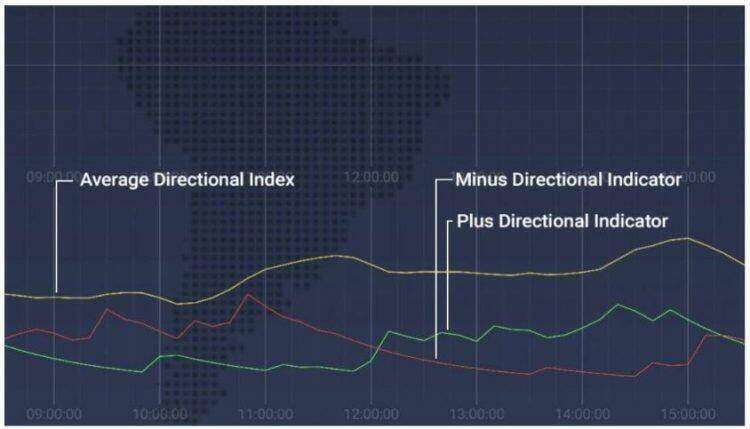Contents:

A patient with end-stage liver disease is admitted for an orthotopic liver transplant. The donor organ came from a brain dead patient who was also COVID-19 positive. The recipient was contacted regarding the COVID-19 positive status of the donor prior to admission and elected to proceed with the liver transplant procedure. Assign the appropriate code from category D57, Sickle-cell disorders, for the sickle cell crisis and code U07.1 for the COVID-19 infection. While the COVID-19 infection triggered an acute sickle cell crisis, SCD is not a manifestation of COVID-19.

An ASC is a type of outpatient facility that can be an extension of a hospital or an independent freestanding ASC. The Outpatient Prospective Payment System is a Medicare reimbursement methodology used to determine fees for Part B outpatient services. Also called Hospital OPPS or HOPPS, the OPPS was mandated as part of the Balanced Budget Act of 1997 to ensure appropriate payment of services and delivery of quality medical care to patients. Navigating the healthcare coding and reimbursement sector can be complex as there are varying rules and guidelines that are not always transparent. The examples above demonstrate how the guidelines can differ depending on the payer-specific rules and the healthcare setting. Kay Piper reviews the guidance and updates coders and CDISs on important information in the AHA’s fourth quarter 2023 ICD-10-CM/PCS Quarterly Coding Clinic in an easy to access on-demand webcast.
The outpatient and inpatient scenarios above discuss capturing the professional work of the physician. However, the facility coders also would submit claims to bring in reimbursement for the facility resources used (such as the room cost, nursing personnel, drugs, supplies, etc.), which is separate from the professional fee. For example, suppose a patient presents to the outpatient clinic with a complaint of chest pain and shortness of breath . After a full assessment and work-up, a final diagnosis of rule-out acute myocardial infarction is documented.
Annual Meeting inauguration, travel, hotel and child care
Reimbursement methods for services provided to patients receiving care or treatment in an outpatient facility setting can differ depending on the payer type or the type of service . However, the primary outpatient hospital reimbursement method used is the OPPS. The business office is a separate department within the hospital, that is commonly referred to as patient financial services. They are responsible for ensuring that a clean claim is submitted to the payer for appropriate reimbursement. The billing form used to bill for outpatient hospital procedures and services is the UB-04 claim form, shown above in Figure 1, which is maintained by the National Uniform Billing Committee .

Query the provider whether “residual respiratory failure” refers to acute on chronic, or chronic respiratory failure. I spoke to a number of these new additions in my summary of the fiscal year 2023 Inpatient Prospective Payment System final rule. Again, I encourage you to read the fourth quarter Coding Clinic in its entirety. It is true that many of these codes would not be a focus of your CDI reviews, but knowledge is power, and it is important for us to understand what codes are available and the needed specificity.
Procedures or services that require the manual coding of ICD-10-CM, CPT®, or HCPCS Level II codes are done by the department’s coding staff. The professional fee services are billed on the CMS-1500 professional claim form, shown in Figure 2. The electronic version of the CMS-1500 is called the 837P , the ANSI ASC X12N 837P, or the American National Standards Institute Accredited Standards Committee X12N 837P Version 5010A1. In the second situation, the only difference seemed to be that the lesions found on endoscopy were bleeding and cauterized. Coding Clinic said “the primary focus of the admission was to diagnose and treat the bleeding conditions” which “were responsible for the anemia,” so one of the bleeding conditions should be selected, and they discounted the anemia as a potential PDx.
Ms. Bryant continues to advocate for compliant clinical documentation and data quality. She is passionate about helping healthcare have accurate and reliable coded data. Ask the clinician to clarify unclear, conflicting, or vague documentation.
Senior Physicians Section (SPS) Governing Council elections
No, the 12 new ICD-10-PCS codes describing the use of therapeutic substances to treat COVID-19 do not impact MS-DRG assignment. However, hospitals are encouraged to report these codes when applicable, as they will be useful in evaluating the effectiveness of different therapeutic substances used to treat COVID-19 and for tracking patient outcomes. Yes, it would be appropriate to report a code for side effects when the patient requires additional treatment or medical care such as monitoring or treatment for the side effects.
This results in eight new codes specifying the transfusion via peripheral and central veins. The fourth quarter Coding Clinic offers specific descriptions of these substances and their indications for use. The business office plays a vital role in this process by ensuring that a clean claim is submitted to the payer. Any inaccuracies with the billing or coding should be remedied prior to claim submission. A rejected or denied claim can create a bottleneck in the reimbursement process and have an adverse effect on the hospital’s reimbursement .
Official coding guidelines provide detailed instructions on how to code correctly; however, it is important for facility coders to understand that guidelines may differ based on who is billing . The ICD-10-CM Official Guidelines are a good example, with sections that apply to all healthcare settings, such as Section I.A, Conventions for the ICD-10-CM, and Section I.B, General Coding Guidelines, as well as sections that apply only to specific settings. For instance, Section IV, Diagnostic Coding and Reporting Guidelines for Outpatient Services, is relevant to coding and reporting hospital-based outpatient services and provider-based office visits. It is imperative that facility coders stay abreast of official coding guidelines across all code sets (ICD-10-CM, CPT®, and HCPCS Level II) and review the published updates and changes as they occur. In the outpatient hospital setting, charges for resources used, medical services, and procedures that do not require the skill set of a coding professional typically are hard-coded directly from the hospital’s Charge Description Master and captured on the hospital’s UB-04 claim form.
E&M Incident-to and Split/Shared Services: Top 10 Issues for 2023
In response to the national emergency that was declared concerning the what is coding clinic-19 outbreak, the Centers for Disease Control and Prevention’s National Center for Health Statistics is implementing new ICD-10-CM diagnosis codes, effective January 1, 2021. Assign codes U07.1, COVID-19, and D68.8, Other specified coagulation defects, and L99, Other disorders of skin and subcutaneous tissue in diseases classified elsewhere. If COVID-19 is confirmed, assign code U07.1 instead of code Z20.828 or Z20.822.
- The medical coding systems currently used in the United States are ICD-10-CM/PCS and HCPCS .
- Thus, potentially preventing the clinical validation denial and subsequent review/appeal.
- Identify opportunities to reduce claim edits and enhance first pass payment rate.
Develop internal coding guidelines to help promote and obtain complete and specific documentation. Provider documentation must state that the patient has AIDS or HIV in order to assign B20. The official publication for ICD-10-CM and ICD-10-PCS coding guidelines and advice. Clinical validation becomes a gray area for reviewers when the clinical criteria are based on multiple factors combined with the provider’s clinical judgment.
After April 1, 2020, refer to the Official Guidelines for Coding and Reporting found here. Assists in the development of programs and procedures to ensure a 95% or greater coding accuracy rate. Identify opportunities to reduce claim edits and enhance first pass payment rate. The AMA is fighting to permanently remove restrictions on telehealth coverage and payment.
Effectiveness of cognitive behavioural therapy-based interventions … – BMC Psychiatry
Effectiveness of cognitive behavioural therapy-based interventions ….
Posted: Wed, 29 Mar 2023 10:46:04 GMT [source]
The assignment of a diagnosis code is based on the provider’s diagnostic statement that the condition exists. The provider’s statement that the patient has a particular condition is sufficient. Code assignment is not based on clinical criteria used by the provider to establish the diagnosis. The medical billing process for outpatient facilities begins when a patient is registered either by the admitting office or the outpatient facility department and the patient encounter is created.
Official Coding Guidelines for Outpatient Facility Coding
As defined in the https://traderoom.info/-10-CM Official Guidelines for Coding and Reporting, Section IB. This means that if a documented diagnosis does not appear to be clinically supported, the facility is justified in requesting the physician document their rationale via a clinical validation query. Usually this happens most often when the physician has a perfectly legitimate reason for making a diagnosis, but the patient has presented in an atypical way which may not be apparent to the non-physician reviewer on the initial review. Generally, all that is needed is further physician explanation of the atypical nature of the presentation and why it is a legitimate diagnosis even though it may appear to the untrained eye to be unsubstantiated. Clinical validation is the clinical review of a claim to assess whether the patient really has the conditions that were documented.

In contrast, the next question addressed an encounter for which a patient with known adenocarcinoma of the lower esophagus was admitted with ataxia and diplopia. The work-up determined the presence of a new metastases to the brain, contributing to a non-traumatic intracerebral hemorrhage, as the cause of the symptoms on presentation. In this case, the principal diagnosis would be the secondary malignant neoplasm of the brain, and the complication of the cerebral hemorrhage would be sequenced as the secondary diagnosis.
Washington Healthcare Update- Mar 27, 2023 – Lexology
Washington Healthcare Update- Mar 27, 2023.
Posted: Mon, 27 Mar 2023 15:56:15 GMT [source]
It must still meet the definition for reporting as an additional diagnosis. The three main coding systems used in the outpatient facility setting are ICD-10-CM, CPT®, and HCPCS Level II. These are often referred to as code sets. Familiarize yourself with the dramatic 2023 changes to codes, coding guidelines and documentation requirements for evaluation and management (E&M) split/shared and incident-to services. When documentation identifies an exposure to monkeypox, we are to assign code Z20.828, Contact with and exposure to other viral communicable diseases. Monkeypox is thought to be contagious from the start of symptoms until the rash is healed and a fresh skin layer is formed and intact.
Note that Medicare has identified certain other facilities, such as critical access hospitals, that may use C codes at their discretion. The role of diagnosis codes in the outpatient reimbursement process is to support the medical necessity of the services provided. Consequently, complete and accurate assignment of ICD-10-CM codes is essential to the outpatient reimbursement process.
